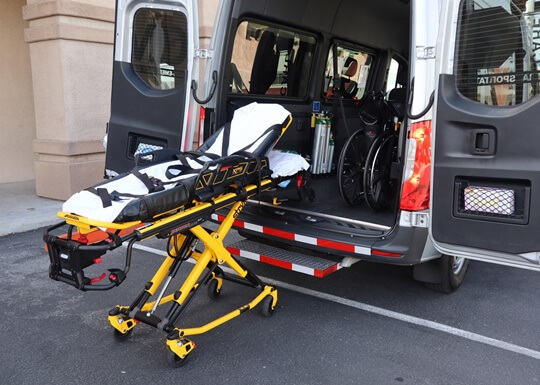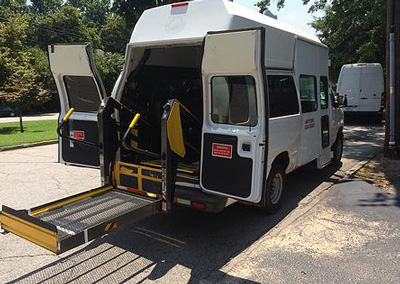Find Trusted Medical Transportation Services Near Me for Comfort
Find Trusted Medical Transportation Services Near Me for Comfort
Blog Article
Easily Accessible and Affordable Medical Transportation Options for Seamless Health And Wellness Support
In the realm of health care, the ease of access and price of medical transportation are vital in ensuring people can access the care they need when they need it. From non-emergency medical transport solutions to innovative options like telehealth, the landscape of clinical transport is developing to meet the diverse requirements of individuals.
Non-Emergency Medical Transportation Provider

These services are staffed by skilled professionals that focus on person convenience and security during transit. Chauffeurs are outfitted to manage people with differing medical demands and ensure that all trips are hassle-free and smooth - Medical Transportation Services Near Me. Additionally, non-emergency clinical transportation solutions frequently use specialized lorries that are wheelchair-accessible, making them appropriate for a variety of people with different wheelchair requirements
Volunteer Motorist Programs
Volunteer chauffeur programs contribute in supplying transportation aid for people in demand of non-urgent treatment. These programs depend on the kindness of volunteers that donate their time and lorries to help transport individuals to and from clinical consultations. By utilizing volunteer motorists, organizations can provide an economical remedy for people who may not have accessibility to dependable transport.
One of the vital advantages of volunteer driver programs is the customized treatment and focus that individuals get. Unlike traditional transport solutions, volunteer drivers often create a rapport with the individuals they aid, producing a encouraging and thoughtful environment during what can be a stressful time. Additionally, volunteer driver programs can aid bridge the gap for people living in underserved or country areas where mass transit options may be restricted.
Public Transportation Options

One of the key advantages of public transport is its extensive accessibility in urban and country locations alike. This visit their website substantial network allows clients from diverse backgrounds to take a trip to clinical visits with relative ease. Additionally, mass transit systems are frequently geared up to fit people with specials needs, offering available travel options for those with movement obstacles.

Ride-Sharing and Transport Network Business
The advancement of modern-day transport options for clinical purposes extends beyond conventional public systems like trains and buses to include the innovative world of ride-sharing and transportation network business. Ride-sharing services such as Uber and Lyft have actually reinvented the means people travel to clinical consultations, providing ease and adaptability to patients that may not have access to their vehicles or typical public transport. These systems permit users to request a ride with the touch of a switch on their smart devices, offering door-to-door service that can be especially helpful for individuals with flexibility difficulties or those needing aid.
Transport network firms (TNCs) have also played a substantial function in bridging the gap in medical transportation services. Companies like Veyo and RoundTrip concentrate on non-emergency clinical transport, dealing with patients that need a higher level of assistance throughout their about his journeys to medical facilities. By partnering with health care carriers and insurance firms, TNCs make certain that patients can access trusted and prompt transportation options, eventually contributing to improved health and wellness results and patient fulfillment.
Telehealth and Digital Assessments
Enhancing medical care ease of access and comfort, telehealth and online assessments have become pivotal elements in modern medical practices, reinventing the means patients connect with doctor. Telehealth leverages modern technology to promote remote communication between individuals and health care specialists, using a large array of solutions such as virtual consultations, remote monitoring, and electronic prescriptions. Virtual examinations enable people to seek clinical guidance, medical diagnosis, and treatment from the convenience of their homes, removing the demand for physical sees to medical care facilities. This approach not just conserves time and decreases transport prices for clients however also enhances the overall performance of medical care distribution.
In addition, telehealth plays a critical function in extending clinical solutions to underserved areas, country locations, and people with minimal wheelchair. By breaking down geographical barriers and boosting healthcare outreach, telehealth promotes early intervention, continuity of care, and client interaction. As technology proceeds to breakthrough, telehealth is poised to play a significantly substantial function in forming the future of health care distribution, cultivating enhanced health and wellness outcomes and individual fulfillment.
Verdict

From non-emergency medical transport solutions to ingenious options like telehealth, the landscape of medical transport is developing to satisfy the diverse needs of individuals.Non-Emergency Medical Transportation Provider promote the secure and timely transportation of individuals needing non-urgent clinical treatment to and from health care centers.The development of modern-day transportation options for medical objectives extends past traditional public systems like buses and trains to include the innovative world of ride-sharing and transportation network firms.Transportation network companies (TNCs) have actually also played a substantial function in connecting the void in medical transport solutions. Non-Emergency Medical Transportation Providers, Volunteer Motorist Programs, Public Transportation Options, Ride-Sharing and Transport Network Companies, and Telehealth and Virtual Consultations all play a crucial role in attending to transport obstacles to medical care accessibility.
Report this page